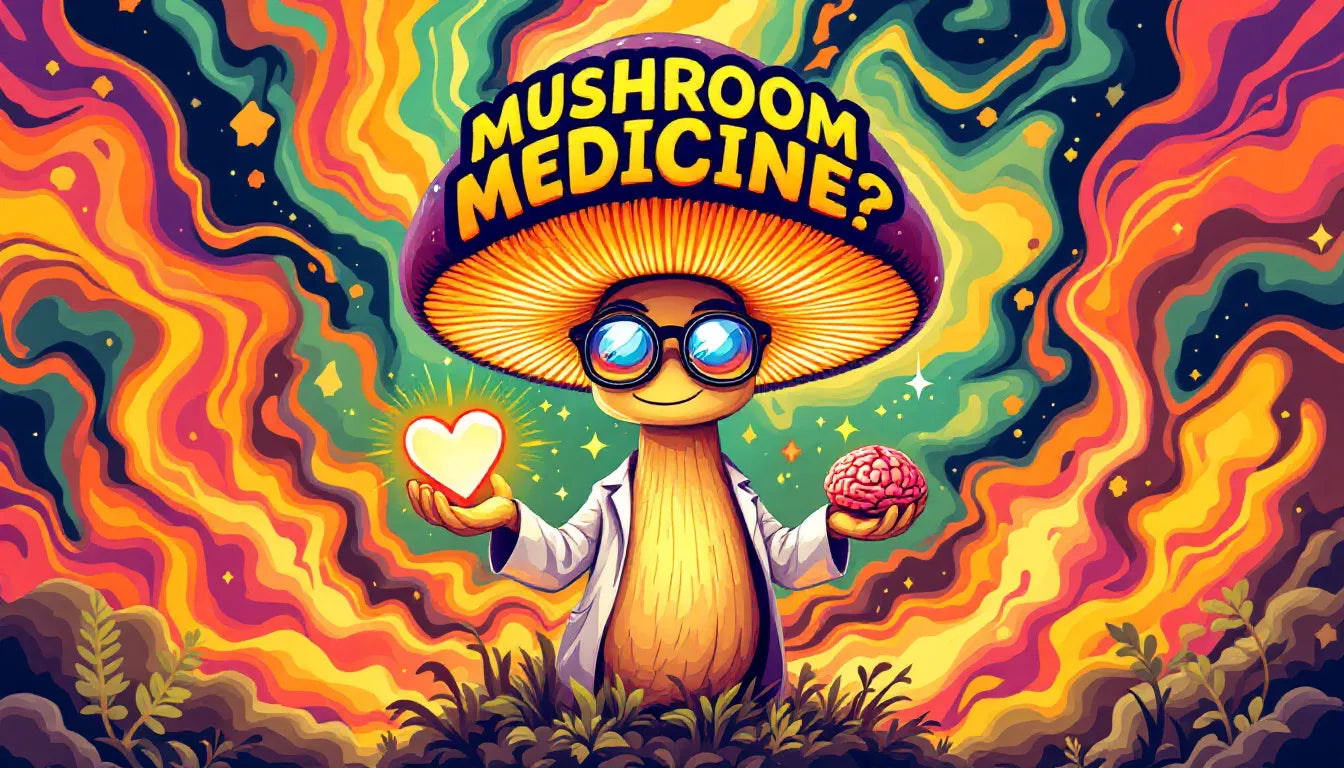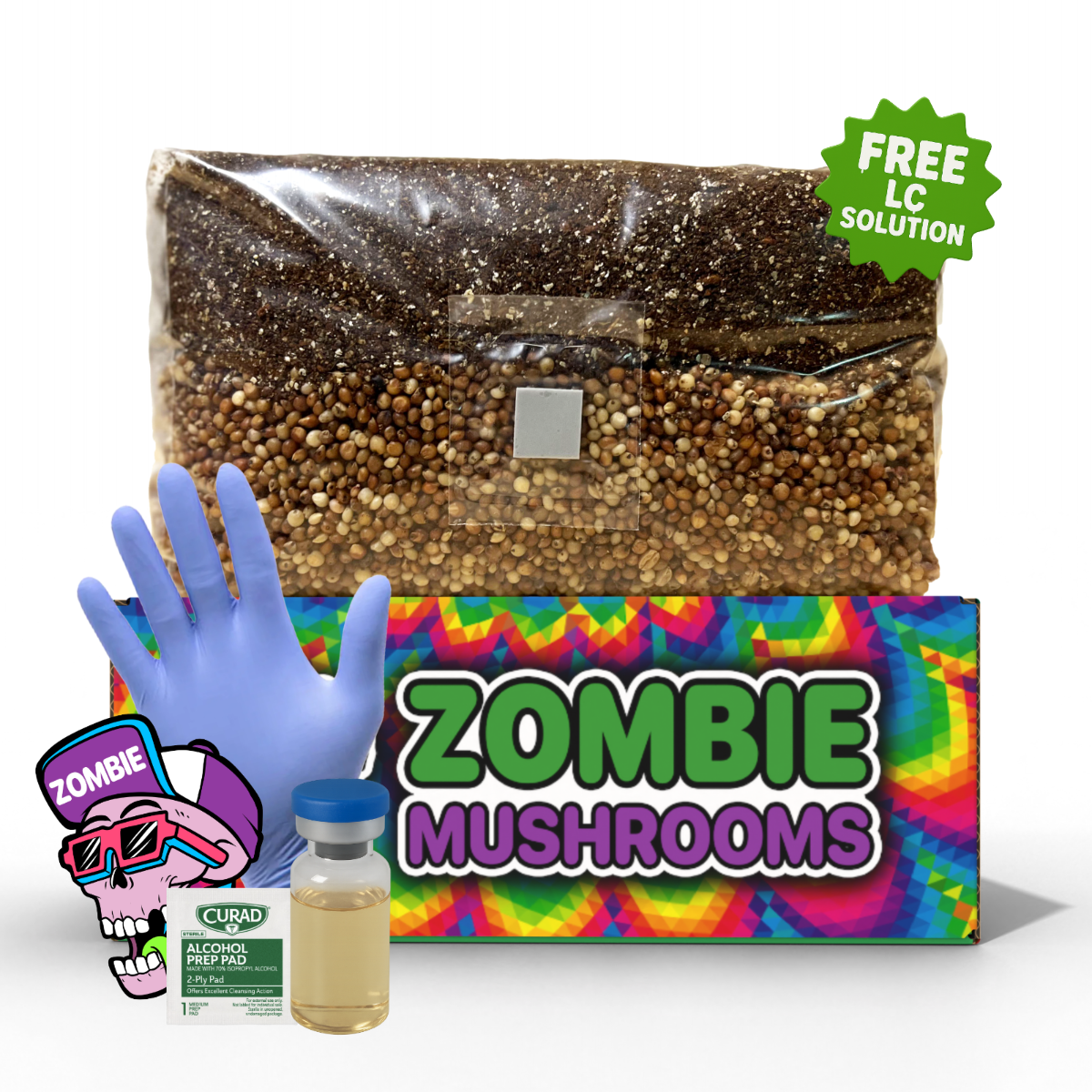⬇️ Prefer to listen instead? ⬇️

- Pholiota adiposa compounds may affect Alzheimer’s-related pathways, according to new computational predictions.
- Chestnut mushrooms stimulate immune cells like macrophages and NK cells, improving immune response.
- Extracts from chestnut mushrooms improve gut microbiome by increasing Lactobacillus in mice.
- Their potassium and adenosine content support healthier blood pressure and vascular function.
- Lab studies show methyl gallate from these mushrooms neutralizes over 80% of harmful free radicals.

Chestnut Mushroom Benefits: Are They Really Healthy?
If you’re looking for an ingredient that excites your taste buds and enhances your health, chestnut mushrooms—scientifically known as Pholiota adiposa—deserve a place on your plate. With their savory, nutty flavor and chewy texture, these mushrooms stand out both in cooking and clinical research. As new members of the medicinal mushrooms family, they have immune-boosting, antioxidant, neuroprotective, and anti-inflammatory properties, making them a rising star in functional nutrition—and with a mushroom monotub kit, you can even try cultivating them at home.

What Are Chestnut Mushrooms (Pholiota adiposa)?
Chestnut mushrooms are in the Pholiota genus, with Pholiota adiposa being their botanical name. The species is often nicknamed "Fat Pholiota" due to its glistening, grease-like cap—a trait that helps you recognize it. Originally from East Asia, Pholiota adiposa has long been used in traditional folk medicine and cuisine across Japan, China, and Korea for its supposed powers to boost vitality.
Unlike the more well-known cremini or baby bella mushrooms (both are just stages of Agaricus bisporus), chestnut mushrooms form tight woody clusters and grow naturally on decaying hardwood trees. The mushrooms' caps are mahogany to golden-brown, with a subtly sticky, almost lacquered finish. The stems are short and fibrous, good for cooking whole or thinly sliced.
From a cooking point of view, they are liked for their strong umami depth, nutty tastes, and a pleasantly chewy, meat-like bite—not often found in edible fungi.

Physical Description and Culinary Highlights
If you look at them, chestnut mushrooms are compact with round, convex caps that can feel gently oily. As they get older, their cap edges flatten out, but they stay a richer color than most button-style mushrooms. Unlike some good culinary mushrooms like oyster or maitake, chestnut mushrooms stay firm when cooked and don't get soggy or dissolve in dishes with a lot of broth.
They work well in things like
- Roasts, where their crispy edges add different textures
- Thick soups and stews, staying chewy with soft vegetables
- Stir-fries as a meat-substitute that holds sauce well
- Pastas and risottos, where they take in flavors while adding umami
They are strong in cooking because you can use them in many ways—grill, sauté, or simmer them. If you’re vegetarian, vegan, or just want flavorful meat alternatives, chestnut mushrooms are satisfying and hearty.

Nutritional Powerhouse: Essential Macro and Micronutrient Profile
At just 15 calories per 100 grams, chestnut mushrooms are very low in calories but full of functional value—making them a new item in functional food and medicinal mushrooms. Here’s their main nutrients:
Macronutrient Composition
- Protein: About 2.5 grams per 100g—high for a vegetable
- Fat: Less than 0.5 grams—almost fat-free
- Carbohydrates: Mostly dietary fiber, which helps digestion
- Water: Over 90% of the mushroom’s weight, hydrating and low in energy
Key Micronutrients
-
B-Complex Vitamins: An important group involved in nerve health, metabolism, and hormone control
- Riboflavin (B2)
- Niacin (B3)
- Pantothenic acid (B5)
- Potassium: Needed to keep a good heart rhythm and blood pressure
- Copper: Needed for making red blood cells and healthy connective tissue
- Selenium: Strong antioxidant that helps thyroid function and immune readiness
These things make chestnut mushrooms not just a nice food to eat but also something that helps your health.

7 Core Health Benefits of Chestnut Mushrooms
The best thing about chestnut mushrooms is that their flavor is not the only good thing about them. Science now backs up a growing list of health benefits from compounds in Pholiota adiposa.
Enhanced Immune System Function
Beta-glucans, a type of polysaccharide in chestnut mushrooms, are known to affect the immune system. These complex carbohydrates get key immune cells ready, such as macrophages, dendritic cells, and natural killer (NK) cells. These cells are important for finding and getting rid of foreign things like viruses and abnormal cells (Chan et al., 2009).
It's important to note, the immune change is not too strong—Pholiota adiposa doesn't make immune responses too active but helps control a balanced defense, which is important in ongoing and autoimmune problems.
Potent Antioxidant Effects
Being around environmental toxins, poor diet, and stress causes oxidative stress—an unbalance where free radicals are more than your body's ability to neutralize them. Chestnut mushrooms have several strong antioxidant things in them
- Methyl gallate: Shown to be over 80% effective in neutralizing hydroxyl radicals in lab tests (Zheng et al., 2014)
- Ergothioneine: A compound with sulfur that builds up in cells likely to have oxidative stress
- Phenols and flavonoids: Known to get rid of reactive oxygen species (ROS)
These compounds work together to protect cells, slow down aging on a tiny level, and prevent long-term diseases related to oxidation like heart disease and arthritis.
Brain-Protective Properties
Chestnut mushrooms become "medicinal mushrooms" when you think about how they might help thinking. Computer models suggest active compounds from Pholiota adiposa may attach to and get involved with harmful proteins such as Tau and beta-amyloid, both strongly linked to Alzheimer’s disease (Nabirova et al., 2024).
Along with their B vitamins, which help nerve function and making neurotransmitters, these mushrooms may help
- Slow down thinking decline
- Help memory and focus
- Lessen neuron damage from inflammation by reducing STAT3 and NF-κB signaling pathways
Gut Microbiome Modulation
Prebiotic fiber and polysaccharides in Pholiota adiposa help change gut flora. In one study, mice fed chestnut mushroom extracts had a big increase in Lactobacillus species while reducing bad strains—suggesting better digestion and metabolic balance (Wu et al., 2022).
A better microbiome has benefits later on
- Better digestion and getting nutrients
- Improved hormone signals (especially serotonin control)
- Better immune control (70% of immune cells are in the gut)
Anti-Inflammatory Activity
Key active things like adenosine show promise in reducing pro-inflammatory cytokines like IL-6 and TNF-α. A recent review said that Pholiota adiposa extracts lower the expression of factors that drive inflammation in immune cells (PMC).
This anti-inflammatory effect may help prevent or manage
- Joint swelling and pain
- Ongoing fatigue syndromes
- Heart inflammation
- Autoimmune flare-ups
Promising Anti-Cancer Potential
Even though clinical human trials are waiting, early animal studies show good results. A special polysaccharide called PAP80-2a has been taken from Pholiota adiposa and found to stop tumor growth in liver cancer models (Luo et al., 2022).
Specifically, the compound seems to work by
- Slowing down how fast tumor cells grow
- Making cytotoxic immune cell activity stronger
- Causing programmed apoptosis (cell death) in bad tissues
While not a treatment by itself, Pholiota adiposa might one day help in added cancer therapy.
Cardiovascular System Support
A healthy heart needs balanced blood pressure, good blood flow, and anti-inflammatory things—all in chestnut mushrooms.
- Potassium: Works against sodium and relaxes blood vessel tension
- Adenosine: Helps blood vessels widen, improving oxygen flow and lowering clot risks
- Antioxidants: Protect inside linings of blood vessels
Together, these things suggest a protective heart profile that may lower the risk of strokes, heart attacks, and atherosclerosis if you eat them for a long time.

How to Add Pholiota adiposa to Your Diet
Putting chestnut mushrooms in your meals isn’t hard. They're sold dried, fresh, or even powdered—good for teas, smoothies, or cooking.
Cooking Tips and Uses
- Sauté lightly in olive oil with garlic for a garlicky topping
- Roast with rosemary and sea salt for a crispy side
- Put into curries or grain bowls, taking in sauces without getting soggy
- Mix with veggie burgers or meatloaves for more depth and bulk
- Stew in broth with ginger, turmeric, and reishi for a full medicinal mushroom soup
Making their health benefits stronger by mixing chestnut mushrooms with other medicinal mushrooms—like lion’s mane, chaga, and turkey tail—is a great way to really improve your dishes.

Growing Pholiota adiposa at Home
If you want to grow your own food or be healthy in a DIY way, growing your own medicinal mushrooms at home is good and sustainable.
Getting Started
- Use a mushroom grow kit for Pholiota adiposa or chestnut mushrooms
- Good materials to grow on: hardwood sawdust, logs, or hemp blocks
- Keep moist, shaded places between 60–70°F (15–21°C)
- Expect to pick them in 4–6 weeks, often producing several crops
Vendors like Zombie Mushrooms, North Spore, and Field & Forest have easy kits for beginners with guides and help.
Fresh crops make sure they are full of nutrients and get rid of bad things from commercial growing methods.
Safety Notes and Considerations
Chestnut mushrooms are usually safe to eat but, like all mushrooms, have basic safety rules
- Don't pick wild mushrooms unless you are trained; there are poisonous lookalikes
- Rare allergies can happen, especially if you haven't eaten fungal allergens before
- Extracts in high amounts may affect medicines like blood thinners or immunosuppressants
Always start with small amounts and ask your doctor if you’re using mushrooms with medical treatments.
The Final Word: A Good Medicinal Mushroom Addition
Chestnut mushrooms (Pholiota adiposa) are good in two ways: they taste great in cooking and have many health benefits. Their special mix of polysaccharides, antioxidants, and important nutrients makes them a rising star among medicinal mushrooms—and one that will likely become more known in science and cooking soon.
Whether you’re helping your immunity, making your brain healthier, or just making a great stir-fry, Pholiota adiposa is a useful, tasty way to make yourself healthier.
Citations
- Zheng, L., Zhang, Y., Liu, Y., & Zhang, W. (2014). Methyl gallate from mushrooms as bioactive compound with anti-oxidative properties. Journal of Food Biochemistry, 38(2), 179–185. https://doi.org/10.1111/jfbc.12039



